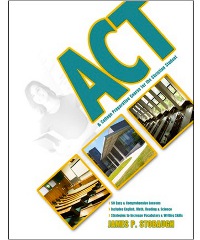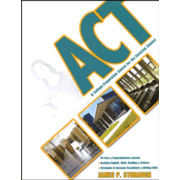James Stobaugh’s ACT & College Preparation Course for the Christian Student is significantly different from other ACT prep courses. This is not a cram course to be completed in one or two weeks. Fifty days is really the minimum time that should be allotted, and up to a year would be even better. To complete it in fifty days requires that students complete one lesson per day. This is possible, but I expect students will cut corners to get through it in that time. In contrast, a fifty-week schedule allows students to complete one lesson per week—a much more practical schedule. Of course, any schedule between these two extremes is also possible.
Each lesson opens with a motivational/devotional essay by Stobaugh that is intended to challenge students to deeply examine their walk with God at this critical time in their lives. A scripture verse for memorization is in a column alongside the essay. “Prayer Points” in each lesson suggest another scripture verse and a virtue upon which students should meditate.
Each lesson continues with activities in math, writing, English, reading, vocabulary, and science, although the order for the subject area activities varies from lesson to lesson. Students can often write directly in the book, circling or writing out answers. Most composition work will need to be completed outside the book. An answer key for all of the activities is at the back of the book.
Most of the activities aside from the writing should not take very much time to complete. While other test prep books usually concentrate on one subject area at a time with a tightly structured approach, Stobaugh’s approach is more interesting since you never quite know what is coming next. This feature will likely appeal to some students and annoy others.
Since vocabulary and reading are major components of the ACT as well as other tests, Stobaugh recommends that students create 3 x 5-inch vocabulary cards to help them study unfamiliar words. Nothing is quite as helpful as actually reading good literature, so Stobaugh recommends that students read about 50 pages each day from such books. To that end, he includes annotated, recommended reading lists, arranged alphabetically by author. The lists are divided into two groups: recommendations for freshmen and sophomores and a separate group for juniors. Presumably, seniors can also read from the juniors list.
Interspersed between as well as within the subject area activities are test-taking strategies. As a former test evaluator, Stobaugh knows how tests are scored, and how essays are evaluated. He offers tips on guessing and other practical strategies as well as advice such as not using essay topics as opportunities to argue for a Christian point of view since this might alienate evaluators.
Stobaugh’s tone in his opening essays is very personal, and his content frequently reveals aspects of his own life. He uses essays that he has obviously written over time and not necessarily with this book in mind. Some conclude with devotional thoughts broadly applicable to all Christians. However, some essays that are written directly to students attempt to encourage them and instill in them a positive vision, almost like the tone of a commencement address. I think many students might enjoy working through this book in contrast to others because they get to know the heart of James Stobaugh in the process.
Note: Stobaugh has created a free 40-page essay workbook to accompany this course that is available at www.nlpg.com/actwkbk. This workbook is very thorough and helpful and could easily stand on its own, so do not miss it!









